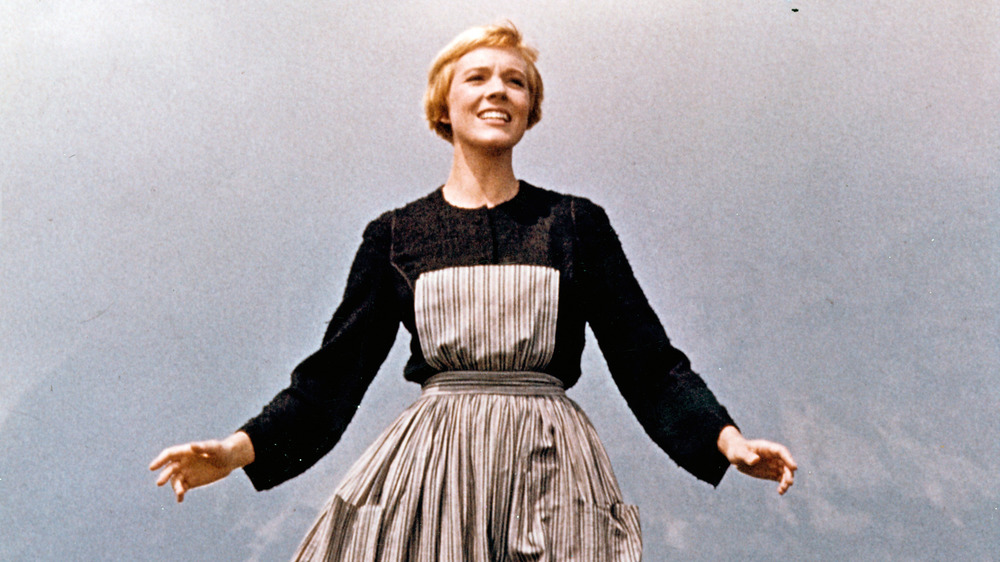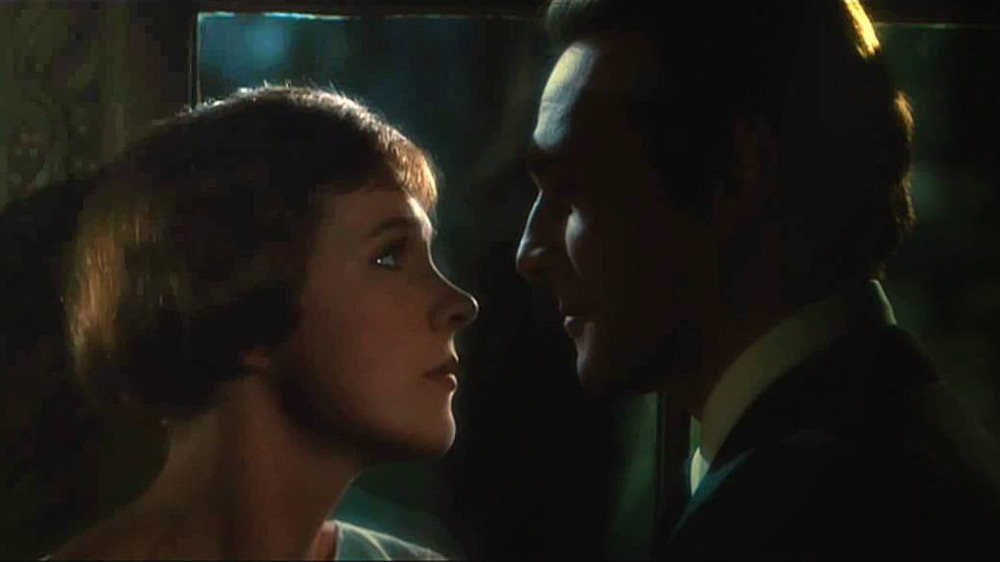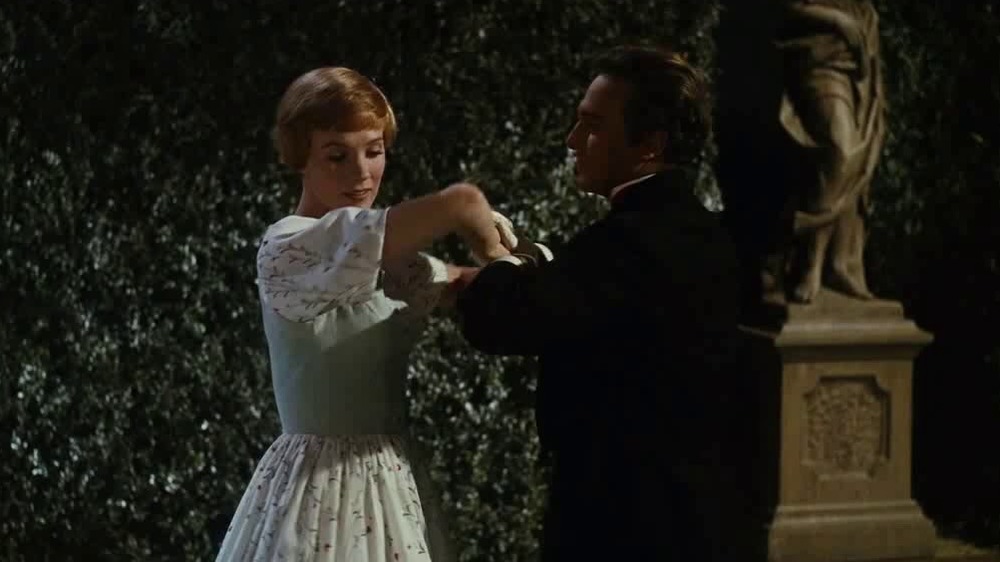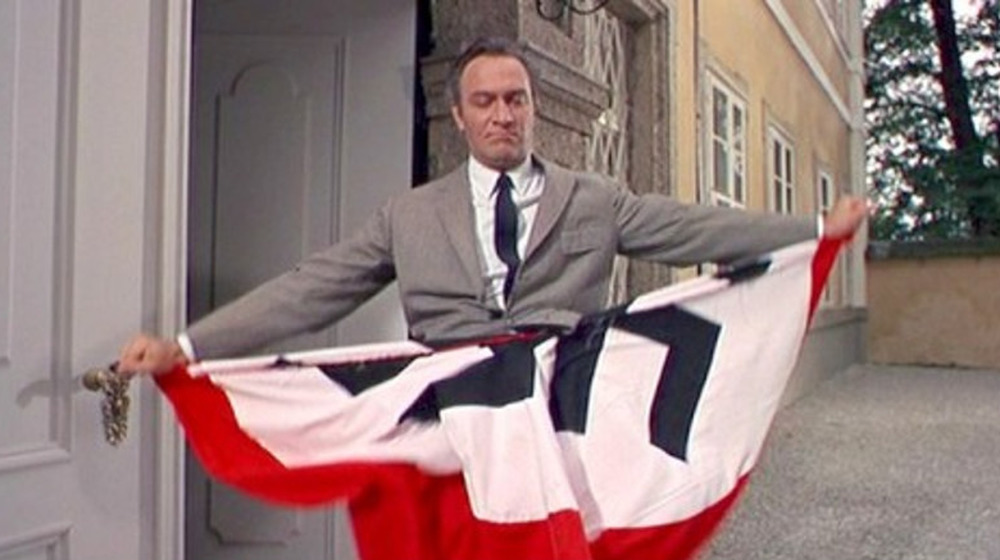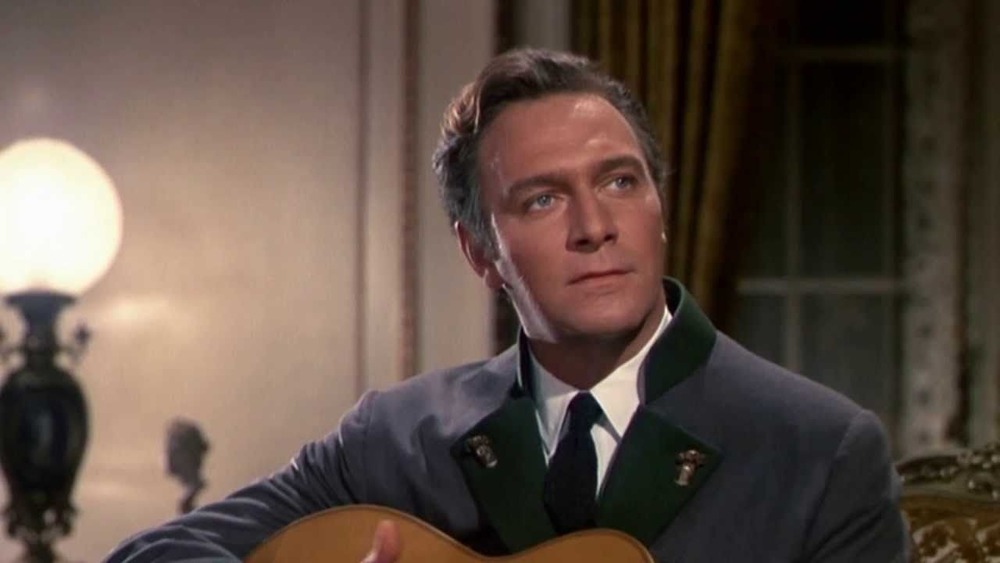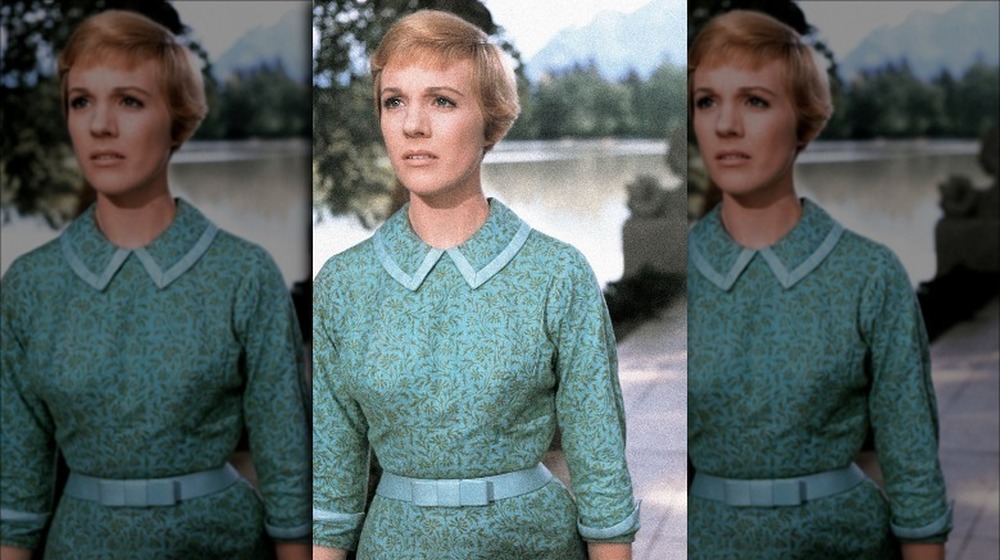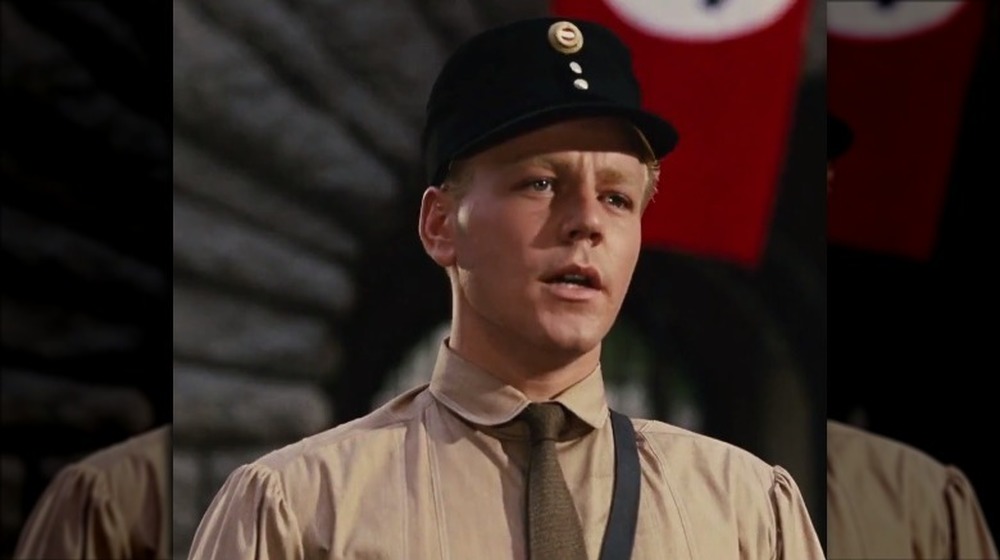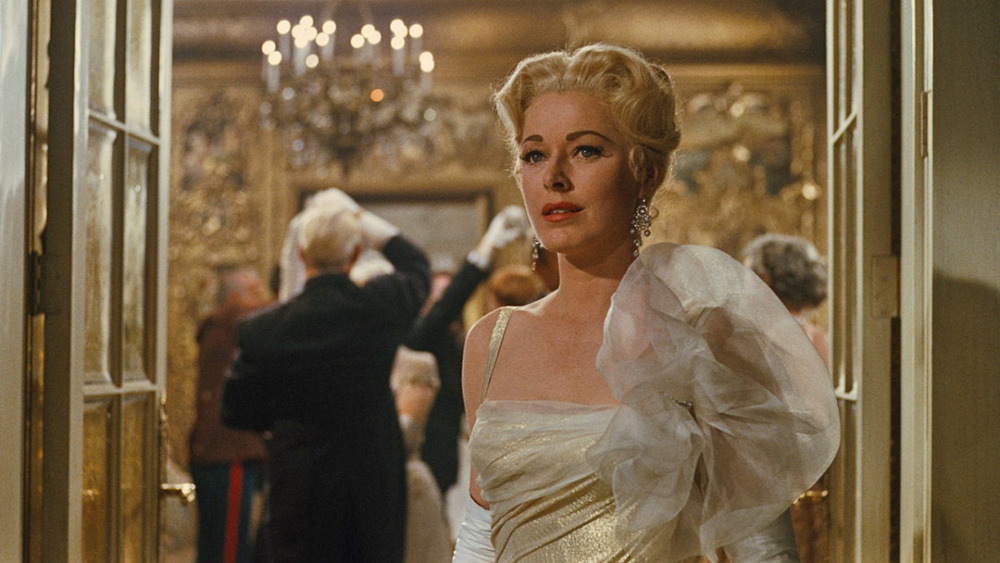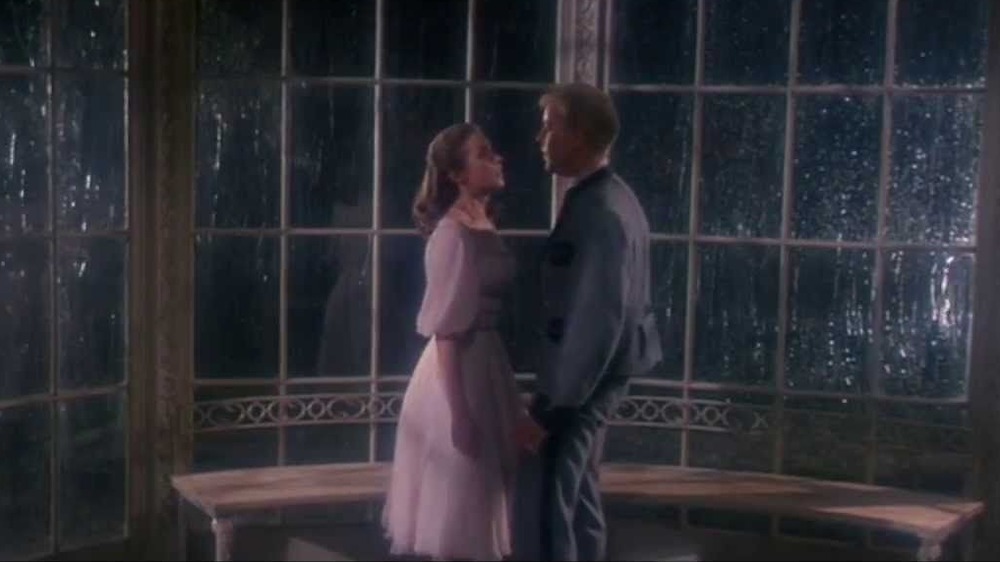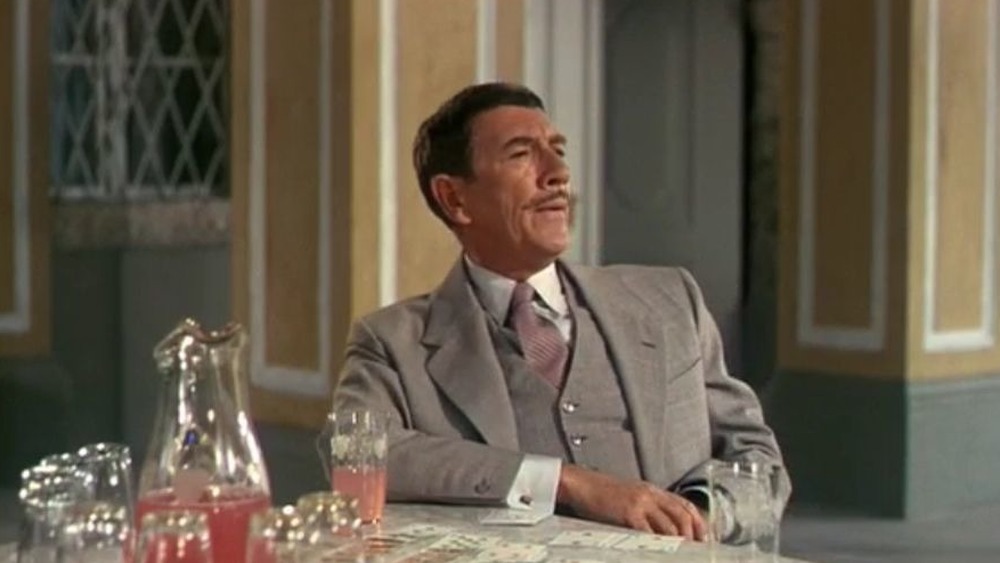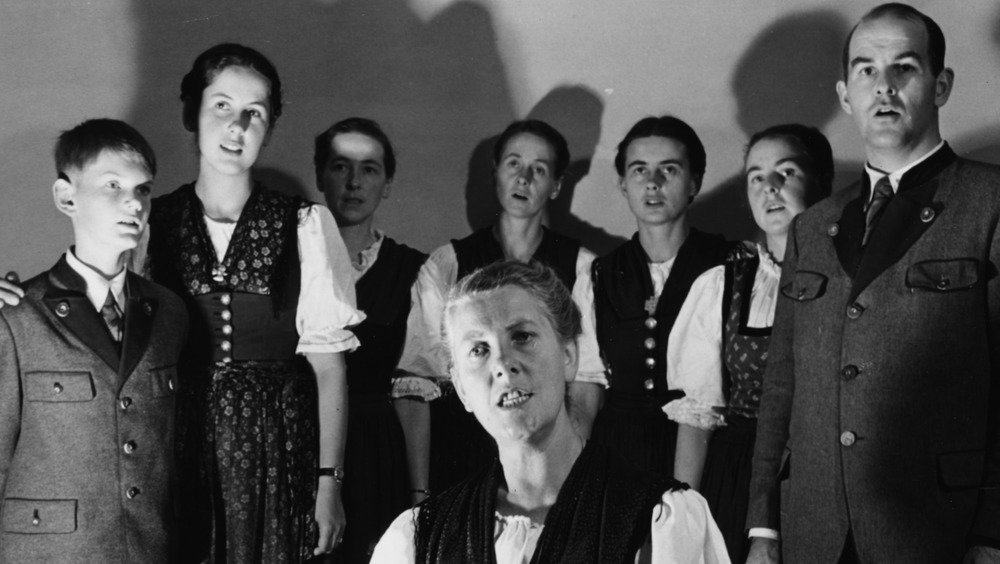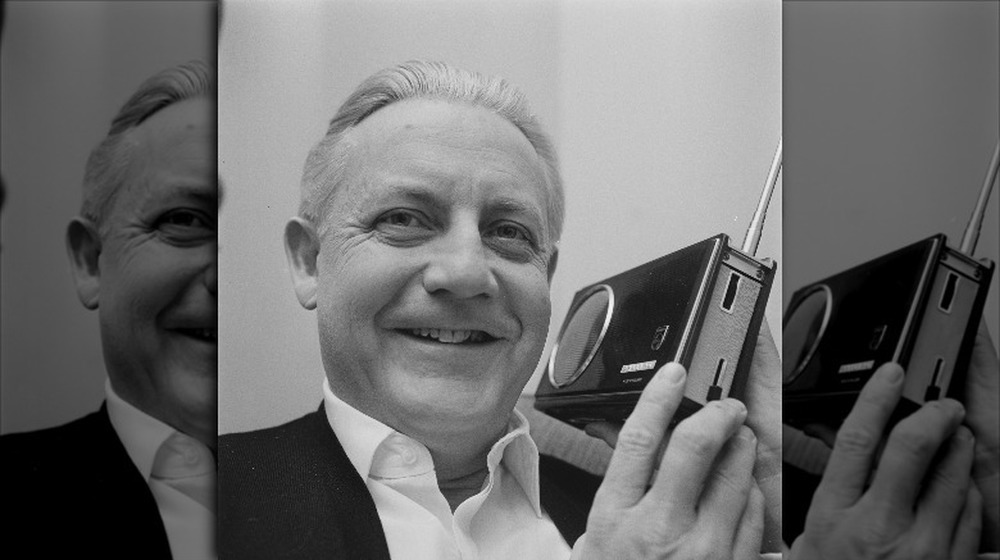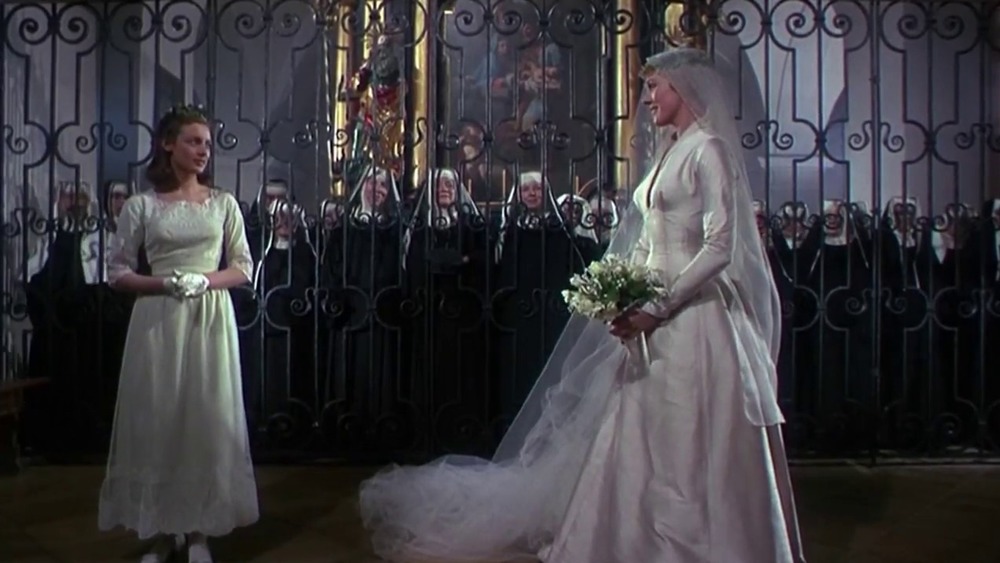Things Only Adults Notice In The Sound Of Music
Just like raindrops on roses, whiskers on kittens, bright copper kettles, and warm woolen mittens, The Sound of Music remains one of our favorite things more than 50 years after its release. Starring Julie Andrews and Christopher Plummer and featuring some of the last songs composed by Richard Rodgers and Oscar Hammerstein, the 1965 musical was a huge hit at the time and has remained a cultural touchstone ever since.
Based (somewhat) on the true story of Maria Augusta Kutschera and the von Trapp family, much of the film's staying power lies with its absolutely sincere wholesomeness. Despite being set in the years leading up to World War II and having real, actual Nazis as villains, it's an unrelentingly sunny and good-natured film set in a universe where singing and dancing literally all the time is offered as a general solution to any problem you might have. Including an infestation of Nazis in your country.
But watching the film as an adult is a much different experience from watching it as a child. There's a lot going on beneath that sunny, earnestly innocent surface, in fact—here are the things only adults notice in The Sound of Music.
The Sound of Music is surprisingly sexy
The romance between governess Maria, recently arrived from the local convent where she's preparing to take her vows as a nun, and Captain von Trapp, bitter widower, is presented as perfectly prudish. The two fight their attraction, remain platonic until their splashy church wedding, and barely hold hands on screen.
But as Decider gleefully notes, there is a lot of sexual innuendo in the film if you look for it. Maria tells Georg that she fell in love with him when he "blew that silly whistle" and Georg admits he fell in love with her when she sat on a pinecone left on her chair by one of his children as a prank. The extremely obvious innuendo of these two symbols goes right over kids' heads, but adults know what's up. Adults can also do the math on the fact that Georg has seven children, which hints at a certain ... enthusiasm for making them.
If you're not convinced, consider the fact that when Maria confesses to the governess that she fled the von Trapp house because she's fallen hard for the Captain, the Abbess tells her that God is all for a good love story, and that Maria must experience life before committing to the convent—and then sings a song encouraging Maria to "Climb Every Mountain." If the mountain in question is not Captain von Trapp, we'll eat our shoes.
The Ländler dance isn't just a dance
One favorite sequence in the film is the Ländler dance at the ball Captain von Trapp hosts. Maria and the children look on woefully from the outside, watching all the fancy folks dance. Maria begins to teach the children a traditional Austrian dance called the Ländler, and when Captain von Trapp notices he begins dancing with Maria to demonstrate. By the end of the dance, the children, the Captain's fiancée Baroness Schraeder, and everyone at the ball is turned on.
But that dance isn't just a nice romantic moment that makes it clear Maria and Georg are hot for each other. As Decider observes, Georg and Maria have to behave very carefully in public. If he touched her in a familiar way, it would be a scandal. But dance has always been a loophole. By dancing with her in public, ostensibly to demonstrate the steps to his children, Georg gets a few uninterrupted minutes to touch Maria and be close to her without causing an outrage.
As historian Gayle Kassing notes, dance has been part of the public courtship ritual for centuries—there's a very good reason why the Ländler scene ends with Baroness Schraeder openly horrified at what she's just witnessed. As every adult in the room knows, Maria and Georg were basically making out in their heads.
The Sound of Music was kind of soft on the Nazis
In all fairness, The Sound of Music is pretty clear on two things: The Nazis are the bad guys in the story, and the Nazis are no good. There's no real wiggle room in the film about this, and even watching as a kid you're pretty clear on these two points.
But when you watch the movie as an adult, you realize that the film totally downplays how evil the Nazis were. As astrophysics professor Jason T. Wright notes, the evil of the Nazis is never made explicit. Captain Georg von Trapp seems to dislike them because they want to force him to serve in their navy and go to Berlin, not because they were genocidal maniacs who were determined to invade most of Europe.
You could argue that the film is set before the world was generally aware that the Nazis were about to launch one of the greatest attempted genocides of all time, but as historian Peter Levine notes, the depiction of von Trapp's conflict with the Nazis still doesn't hold water. Austria as a separate country had only existed for a short time, and someone like Captain von Trapp would have been more likely to want Austria to become part of Germany. Levine argues that the filmmakers contrived an Austrian character who was anti-Nazi without once mentioning any of the things that made the Nazis evil, and he's not wrong.
Christopher Plummer is the sex object in The Sound of Music
The 1960s were not the most enlightened time when it comes to gender roles, and women were routinely treated as sex objects in the movies. Julie Andrews is quite a dish and looks quite fetching in her Austrian-inspired wardrobe (even the infamous dress even the poor didn't want)—but she's not the object of desire in the movie. That would be Christopher Plummer's Captain Georg von Trapp.
As astrophysicist Jason T. Wright notes, the filmmakers use a lot of techniques normally used to highlight the beauty and sensuality of women, like soft focus, on Plummer instead. Scenes are blocked so that Captain von Trapp can be shot in long takes where he stands almost perfectly still, allowing the camera to admire him. As The Guardian notes, Plummer's portrayal of the Captain makes him "the sexiest officer in naval history."
Having von Trapp dress in tailored, fitted military-style outfits (except when he's looking incredibly hot in white tie and tails at the ball) puts more of a focus on a very male sexuality. You don't pick up on it as a kid, but you do as an adult—and it's made clear that every woman in the film does, too. In fact, Maria's reaction to Georg is almost explicitly physical while she is presented as virginal and nurturing. The subtext is easy for an adult to pick up: He's hot, and she wants him.
Maria is presented as subtly queer
In what may be the most subtle character shading of all time, it takes a lot of years of living and a lot of repeat viewing to slowly realize that Maria, as portrayed by Julie Andrews, is presented as almost subliminally homosexual.
As noted by Shondaland, Maria is presented from the very beginning as an outsider who is troubled and uncertain about herself, which many LGBTQ people identify with immediately. She's styled in a subtly "butch" way, with a short, boyish haircut, and in the beginning of the film she's dressed in a very androgynous way that symbolizes her conflict between becoming a nun and becoming a wife. It's easy to take this one step further and imagine she's trying to decide if she's straight or ... not so straight.
As historian Stacy Ellen Wolf notes, it's unsurprisingly common for queer women to experience a "girl crush" on Julie Andrews specifically in The Sound of Music at a young age when they're just starting to figure out their sexuality. They report seeing Maria as a symbol of freedom because she spends most of the first half of the movie rejecting the traditional roles she's asked to play — she won't be the perfect nun (chaste and obedient), she refuses to be Captain von Trapp's idea of the perfect governess (rejecting heterosexual gender roles and marriage symbolically), and she seeks joy in her life despite the disapproval of others. No wonder the character is a queer touchstone.
Rolfe is a horrible person
When you're a kid, the doomed romance between Rolfe Gruber and Liesl is perhaps the second-most boring part of the movie (the first being the not-doomed-at-all romance between Georg and Maria). Even so, you know that Rolfe becomes a bad guy in the end, turning on Liesl just when she needs him to be her friend.
As an adult, you start booing every time Rolfe shows up on screen because he's objectively a jerk from the very beginning. As OnStage Blog notes, our introduction to Rolfe in the film includes an exchange of dialogue that makes it clear Rolfe is already a part of the Hitler Youth, and already cheering on the Nazis from afar. It's easy to overlook because he gets so puppy-eyed with Liesl you almost forget his gushing about "developments" concerning the rise of the Nazis in Europe.
And Rolfe just gets worse over the course of the film. As noted by REBEAT magazine, he's manipulative and abusive towards Liesl, refusing to communicate with her and then acting like she's the crazy one, and calls her a "baby" during the kind of gross "I Am Sixteen, Going on Seventeen" duet, marking him as a smug little sexist. Everything the kid does is the behavior of an abuser.
Baroness Schraeder is a victim
If you're not paying close attention to the film, you might make the mistake of thinking Baroness Schraeder is a villain. After all, we know that Captain von Trapp and Maria are destined to be together even if we're unaware of the true story behind the film — it's movie logic. We're primed to hate the Baroness on sight just because she is Maria's rival.
And as astrophysicist Jason Wright notes, she also engages in a series of superficially villainous acts. She schemes to send the children off to boarding school, for example, and she tells Maria that Georg is falling in love with her, knowing the innocent and confused young governess will leave immediately as a result.
In reality, none of these things are evil. The children behave terribly towards the Baroness because they prefer Maria — so thinking they might need some discipline isn't crazy. And while her motivation behind telling Maria about Georg's feelings is clearly selfish, she doesn't lie, or force Maria to do anything. And as Flood Magazine makes clear, when it becomes painfully clear that she has lost Georg to Maria, the Baroness is the only one in the love triangle to behave with class. She makes it easy for Georg to break up with her, and makes no effort to take revenge on Maria or stop their marriage by spreading rumors. She's all class.
The sexual politics of The Sound of Music are pretty bad
The original Broadway musical that was adapted into the classic film was staged in 1959, so it's not surprising that the sexual politics and gender roles in the film aren't exactly progressive. But one thing you pick up on when you watch the movie as an adult is that those politics are actually kind of shockingly bad even for the time.
As Feminist Legal Theory writes, the film presents an extremely unrealistic ideal for women. Liesl, as a teenage girl, is presented as a total innocent, completely ignorant of all aspects of men, romance, and (gasp) sex — and this is clearly a good thing according to the film. Although REBEAT Magazine notes that the "I Am Sixteen, Going on Seventeen" sequence between Liesl and Rolfe is intended to be funny because Rolfe isn't much older or more experienced than Liesl, the song's lyrics still support the idea that the best way for a young girl to be is "totally unprepared" to "face a world of men."
Later, after marrying Liesl's father, Maria advises her that when a woman marries a man she belongs to him like a piece of property, and since this attitude is coming from a cheerful, ebullient Julie Andrews it is presented as the most obvious truth. The fact is, in the film's universe the only way Maria calms down and finds happiness is when she lands a husband.
Uncle Max is doomed
One thing kids and adults can agree on when it comes to The Sound of Music: Uncle Max is delightful. Acerbic, greedy, and permissive, he's that fun family friend you adore as a kid and like to drink with as an adult. But when you grow up, you realize that he's also the darkest part of the film. Because while it's not explicit, there's every reason to believe Max is Jewish, and every reason to think Max is gay — and the Nazis have recently arrived in town.
As historian Peter Levine notes, Uncle Max is presented as a "money-grubbing urbanite," which is a traditional stereotype of Jewish people. And The Guardian describes the character as "clearly gay." The film was released in 1965 and was aimed at families, so it's not surprising that the filmmakers chose to keep things light, but there's a darker reason to bury his possible queerness and Jewish heritage: The Nazis.
After spending most of the film looking out for himself, Max finally goes selfless and helps the von Trapps escape, but unlike the real person the character is based on, Max stays behind. Which means a Jewish, gay man who has just broken several laws is about to be arrested by members of the Nazi Party.
The Sound of Music's historical accuracy is a disaster
The Sound of Music is ultimately based on Maria von Trapp's memoir The Story of the Trapp Family Singers. But just because it's based on a real story doesn't mean it can be used to teach the history of the Austrian Anschluss and the leadup to World War II, because it's actually incredibly inaccurate.
As History makes clear, the list of inaccuracies is very long even if you restrict it to the von Trapp family's personal history. The ages and names of the children were changed (the von Trapp's eldest was fully grown and a practicing physician when the family fled Austria, and three kids were simply omitted altogether), Maria and Georg von Trapp got married nearly 10 years before they fled — and most notably, the family began singing after they went broke in the Great Depression and needed to make some money.
The film gets plenty of other history wrong, too. For one thing, as The Culture Trip reports, the song "Edelweiss" isn't a traditional Austrian folk song — it was written by Rodgers and Hammerstein, and isn't well known in Austria. And the family didn't climb the Alps into Switzerland; for one thing, crossing the Alps would have brought them into Germany. For another, they didn't do any hiking at all — they hopped on a train to Italy.
The Sound of Music is very visually sophisticated
When you think The Sound of Music, you think of the sugar-sweet tone and the exuberant song and dance numbers. You can probably sing "My Favorite Things" from memory, in fact.
But as The Movie Waffler points out, when you get a little older and watch the film with a critical eye, you come to appreciate the surprisingly sophisticated visual style employed by director Robert Wise — who won an Oscar for Best Director for his work on the film. Wise used a recurring visual motif of gates to symbolize various characters transitioning from one world to another, as Maria does when she leaves the abbey and enters the von Trapp house, or from one stage of life to another. The gates of the house also serve to either imprison the children in the beginning, or to protect the family when they flee at the end — the Nazis are shown frustrated at the locked gates as the von Trapps slip away.
Wise also allows his characters to communicate much of the story without any dialogue. A prime example is the scene when Captain von Trapp is convinced to sing "Edelweiss" for the children. No words are spoken, but von Trapp stares at Maria as he sings, and she looked right back. Baroness Schraeder looks at the floor — clearly aware she's been forgotten.
The clothes tell the story
As a kid, the costumes in The Sound of Music are just hokey. As an adult, you realize they perfectly indicate the status of each character.
As Frock Flicks points out, Maria's clothes track her development. Initially, she's wearing the cast-off clothing given to her by the abbey — drab, boxy clothes that are similar to what the children wear. When she and Georg von Trapp finally admit their feelings and make out in the gazebo, she's wearing a much more feminine gown that flows and shimmers. Her wedding dress is a fairly obvious symbol of transition — but what's really notable is the chic, sophisticated outfit she wears after her honeymoon, symbolizing not just her ascension as the woman of the house, but as an adult.
Meanwhile, Georg starts off wearing military-style clothes that underscore his rigid, bitter life — and his children wind up dressed in drapes, marking them as just something else rattling around his house — afterthoughts. But by the end of the film, Georg is dressed very similarly to his children, signifying his return to his family.
Interestingly, Aging Like Wine notes that Maria's iconic wedding dress is totally inaccurate for late-1930s Austria, possibly to ensure that Julie Andrews looked current and on-trend at that crucial point in the film.
